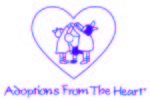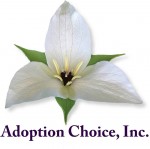Adoption plans for children are made for a variety of reasons, including poverty, single-parent households, previous abuse and neglect, maternal physical and mental illness, drug and alcohol abuse (both prior to and after birth), and legal regulations of a given country. These reasons become factors in a child’s medical, developmental, and psychological future.
That’s why it’s important to seek and understand a pre-adoption medical review. A review will address your concerns about the health of a child and help you give your child the best care.
Although many families focus on the country of a child’s birth in assessing health and development, this factor is not as important as the individual situation of a given child. Premature birth, poor prenatal nutrition, and living in an orphanage all play into the present and future health of a child.
Families adopting outside the United States need to realize that children available for adoption overseas may have the same risk factors as children adopted from our own foster care system.
What You’ll Get
Medical information that accompanies adoption referrals varies in depth, content, and accuracy. Those about to adopt a newborn domestically should receive information about prenatal care and diseases, as well as about any blood testing the birth mother undergoes prior to delivery. In the U.S. this should include testing for hepatitis B, HIV, and syphilis.
Older children (whether they’re adopted privately or from foster care) should have medical records that include birth history, immunizations, and previous health care, and prenatal information, if available.
You may gain developmental information through a child’s preventive health care records. For example, growth measurements (weight, length, and head circumference) should be plotted on standard North American growth charts (available at www.cdc.gov/growthcharts). Seek any information about hospitalizations, surgeries, medications, and allergies, as well.
As for overseas adoption, some countries provide only birth information (height, weight, general health, and so on), particularly for newborn referrals. Other countries may offer more detailed information, including medical evaluations, developmental information, even birth-family history of medical disorders. Photos or videos may be available for children. Look for assessment of growth points, evaluating patterns of growth as well as the child’s size.
Be aware that medical terminology from some countries may be unfamiliar, even confusing, to many U.S. physicians. In Russia, for instance, terms and phrases describing inherent maladies in children are sometimes based on assumptions, rather than on diagnoses.
What to Watch For
Most physicians preparing pre-adoption referrals will pay careful attention to information about the size of a child’s head. A small head (microcephaly) may suggest malnutrition, fetal alcohol exposure, or a birth defect, either genetic or resulting from the birth process.
Understand that children who have lived in institutional care are at increased risk for growth delay. Adoption physicians agree that a child will typically lose one month of growth for every three months in an orphanage. With mild malnutrition, the child may be smaller than his peers, but his head size should be normal.
Photos and/or videos of all children (not just those from Russia and Eastern Europe) should be assessed for possible Fetal Alcohol Syndrome. Signs of this disorder include growth delay, developmental delay, and mental health problems.
Whenever possible (when videos are available, for example), language should be assessed, particularly to rule out hearing disorders. A child should also be assessed for unusual stiffness (increase in muscle tone) and/or asymmetry in the way she uses her body.
Specific medical diagnoses, such as cleft lip and palate, heart defects, and limb abnormalities, should be identified with a review of pertinent medical records. The availability and accuracy of such records varies depending upon the child’s birth country. Sometimes additional information can be requested, to give more data about an identified special need, but this is not always available.
Development should be assessed closely, using written information, as well as pictures and videos. Developmental milestones should coincide with a child’s growth, as recorded on a growth chart. For example, a 1-year-old child the size of a 9-month-old should be at the 9-month level developmentally. Extreme delays may indicate long-term challenges.
Particular attention should be paid to a child’s social interactions and language skills, especially if a video is available. A video can reflect only moments in a child’s life, but it may demonstrate how a child responds to familiar adults and children.
Behaviors such as seeking affection, responding to verbal commands, and looking for solace when upset are important in assessing how a child may attach to a new family.
Putting it together
Prospective adoptive parents often seek out a physician with experience in adoption and foster care medicine who will review medical-referral information to determine what other (if any) information is needed to make an informed decision. Many such physicians are members of the American Academy of Pediatrics Section on Adoption and Foster Care (www.aap.org/sections/adoption), and are available for consultation before you travel.
Even with the most complete medical referral, there are still uncertainties ahead. While an objective review of the health information will help you decide whether you are able to provide a good home for a child, adoption is ultimately a leap of faith. Children who come with a past that may influence their future will do best in a loving home prepared to meet their challenges.
Developmental Indicators Chart
At these ages, most children…
1 month
- Lift head a little while lying on stomach
- Watch objects for a short time
- Make “noise in throat” sounds
- Stay away from annoying sensations, such as a cloth or blanket on the face
2 months
- Hold their heads up (bobbing when held in sitting position)
- Sometimes imitate or respond to a smiling person
- Roll partway to side
- Make sounds of discomfort
3 months
- Lift head and chest when lying on stomach
- Recognize bottle or breast
- Smile when talked to
- Show active body movement
- Follow moving things with their eyes
4 months
- Hold head up for a long time without bobbing
- Laugh out loud
- Roll from front to back
- Like to play
- Grab an object held near their hand
- Make sounds when talked to
6 months
- Sit with little support
- Respond to a friendly voice with a smile or coo
- Roll from back to stomach
- Turn and look when hearing sounds
- Change object from hand to hand and from hand to mouth
9 months
- Sit alone and change positions
- Say “mama” and “dada”
- Crawl
- Respond to people they know
- Respond to their own name
12 months
- Pull themselves to stand and occasionally step with support
- Nod their heads to signal “yes”
- Give love
- Pick things up with thumb and one finger
- Say two or three words
15 months
- Walk without support
- Do some self-feeding
- Speak and make their voice go up and down
- Drink from a cup held by someone
- Use four or five words
18 months
- Walk (may run a bit)
- Use five to 10 words
- Climb up or down one stair
- Pull toys that have wheel
- Mark on paper with crayons
- Understand easy directions
2 years
- Give toys when asked
- Recognize a familiar picture and know if it is upside down
- Kick a large ball
- Turn pages in a book (two or three at a time)
- Use two or three words together, such as “more juice”
3 years
- Walk up stairs holding railing
- Unbutton large buttons
- Stand for a moment on one foot
- Talk of toilet needs
- Open doors
- Stack objects by size
- Ask and answer simple questions
- Speak clearly and be understood by family members



